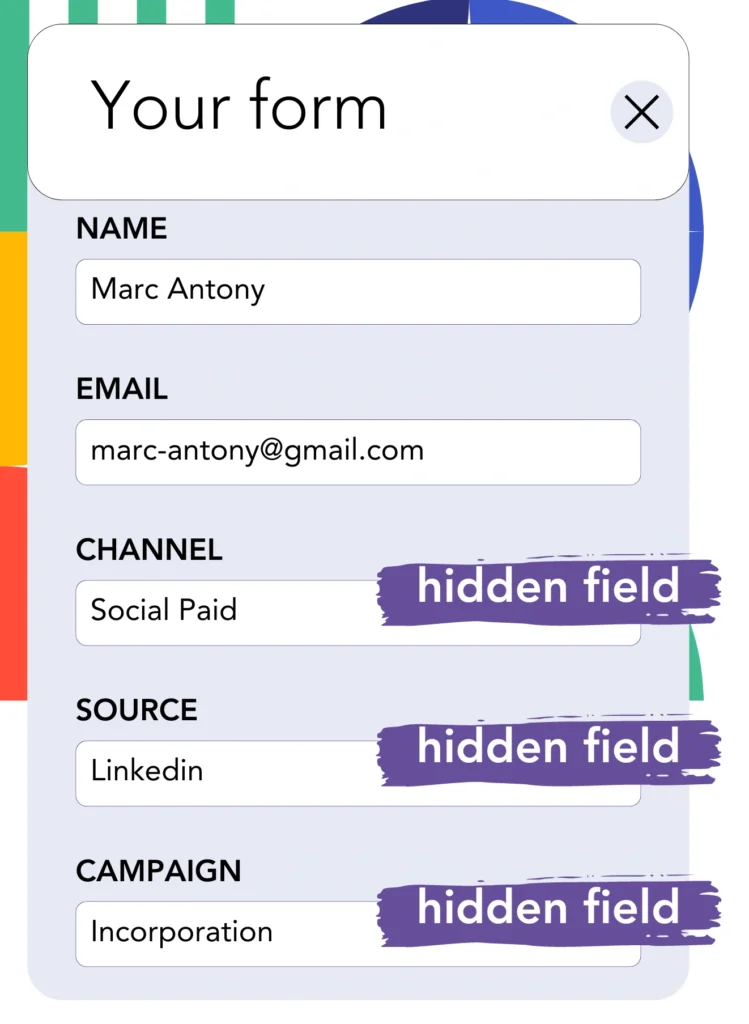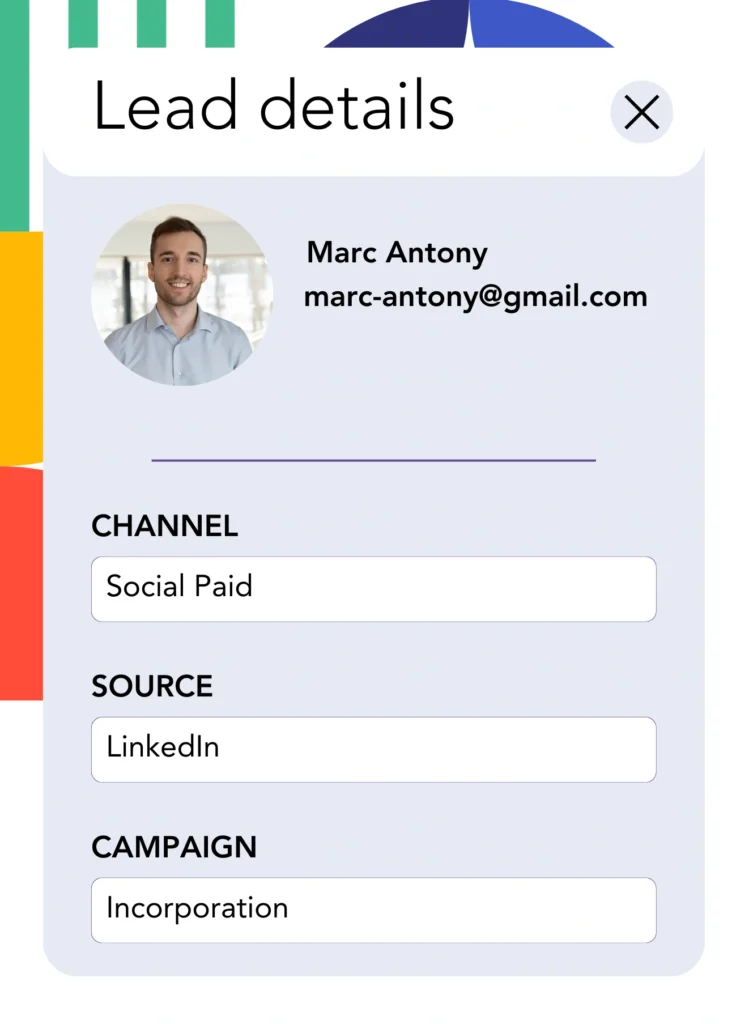Your LinkedIn ads drive leads that are sent to Copper CRM, but you can’t determine the LinkedIn ad that each lead is associated with.
Once a lead transitions into a paying customer, identifying which LinkedIn ad brought in that customer is not feasible.
This tracking issue makes it hard to manage LinkedIn ads efficiently, leading to multiple ad expenditures without knowing which ones are yielding leads and revenue.
Ideally, a simple tool could link each lead back to the specific LinkedIn campaign group, campaign, ad, and audience that led to its generation.
Let’s get started!
How to capture LinkedIn ads in Copper CRM
Step 1: Add Leadsources in the head tag of your website

Leadsources is an efficient tool that tracks the origin of your leads. Once incorporated into your website, it captures up to seven lead source data points for each lead you generate.
Create an account on Leadsources.io – it’s free.
Insert the Leadsources tracking code into the head tag of your website by following this guide.
Step 2: Add the UTM parameters to your LinkedIn ads campaigns

Specify the UTM parameters you want to incorporate into your LinkedIn advertisements for tracking.
For example, you can observe the campaign, ad, and audience using the following UTM parameters:
- UTM_source=linkedin
- UTM_campaign=campaign-name
- UTM_term=audience-name
- UTM_content=ad-name
Even without the implementation of UTM parameters, Leadsources compiles all lead source data—including channel, landing page, and landing page subfolder—to ensure comprehensive tracking for each lead.
Step 3: Add the hidden fields in your form

Implement hidden fields in your form; Leadsources will use them to store lead source data directly for every submission.
When a lead completes your form, Leadsources takes care of filling the hidden fields with the necessary LinkedIn ads information.
To receive detailed instructions for incorporating hidden fields, consult our guide.
Step 4: Capture the LinkedIn ads data in Copper CRM

As users click on your ads and access your site, Leadsources tracks the associated LinkedIn ads data, including campaign, audience, and ad information.
The hidden fields in your form are automatically completed with LinkedIn ads information by Leadsources.
Upon submitting the form, you can link it to Copper CRM to automatically transfer both LinkedIn ads data and your leads.
How does Leadsources work?
Upon installation on your website, Leadsources captures LinkedIn ads information each time a visitor visits your page.
The hidden fields of your form house LinkedIn ads data, which is sent to Copper CRM along with the leads details (name, email, etc.) when the form is submitted.
Leadsources registers the following data points for every visitor:
- Channel
- Source
- Campaign
- Content
- Term
- Landing page
- Landing page subfolder
Leadsources tracks the lead source data through the referrer, even if UTM parameters are not utilized.
In certain instances, applying UTM parameters may not be possible, especially when traffic is derived from organic sources:
- Google Search
- Instagram bio link
- Social media posts
- Etc.
In such instances, many lead source tracking tools cannot identify lead sources as they rely only on UTM parameters for data collection. Conversely, Leadsources is still able to gather certain lead source information even when UTM parameters are not in use:
- Channel
- Source
- Landing page
- Landing page subfolder
Consequently, unlike several competing tools, Leadsources delivers complete lead data tracking across every channel:
- Organic Search
- Paid Search
- Organic Social
- Paid Social
- Referral
- Affiliate
- Display Advertising
- Direct Traffic
Additionally, Leadsources sorts your traffic by channel automatically, which leads to a well-organized dataset.
To sum it up, Leadsources is a reliable and user-friendly tool that consolidates thorough lead source data across all channels in one distinctive location.
Performance reports: Lead, sales, and revenue by source
By analyzing LinkedIn ads data in Copper CRM, you can create numerous performance reports, such as:
- Leads, sales, and revenue by channel
- Leads, sales, and revenue by campaign
- Leads, sales, and revenue by ad
- Leads, sales, and revenue by audience
- Leads, sales, and revenue by landing page
- Leads, sales, and revenue by landing page subfolder
Therefore, you can adjust your LinkedIn budget in line with the channel, campaign, ad, and audience that drive your leads, sales, and revenue.
Let’s investigate the different types of reports available for you to create.
1. Lead source reports
These reports provide insights into the number of leads sourced from:
- Channel
- Campaign
- Ad
- Audience
- Landing page
- Landing page subfolder
Example #1:
Commence your analysis with the “Leads by Channel” report to identify the channel that leads in lead generation.

Example #2:
By determining the highest-performing channel, such as LinkedIn, you can prioritize your efforts in analyzing leads from each of its campaigns.

Example #3:
After finding the LinkedIn campaign that yields the most leads, you can examine which exact audience or ad is contributing to their generation.

2. Sales and revenue source reports
Although recognizing the LinkedIn ads that yield the highest leads is important, we should evaluate their effect on our revenue.
Link your leads to a CRM like Copper CRM to filter out those that became paid customers, enabling you to keep track of sales and revenue from different channels, sources, landing pages, and more.
You can then realign your marketing strategy to highlight the channels, sources, campaigns, audiences, and ads that are most effective in generating revenue.
To illustrate this effectively, consider the following case:
| Channels | Search Paid | Social Paid |
| Leads | 50 | 75 |
| Sales | 5 | 6 |
| Average order value | $150 | $100 |
| Revenue | $750 | $600 |
Following the launch of ads on both Google and LinkedIn, the initial “Leads by Channel” report highlighted that Social Paid ads on LinkedIn were more effective in generating leads than Search Paid ads.
Yet, after analyzing the exported sales and revenue data from your CRM, you found that the Search Paid channel produced greater revenue with fewer leads than the Social Paid channel, which led you to raise its budget.
Furthermore, you can assemble various additional reports related to sales and revenue:
- Sales and revenue by source
- Sales and revenue by campaign
- Sales and revenue by content (aka. ad)
- Sales and revenue by term (aka. audience)
- Sales and revenue by landing page
- Sales and revenue by landing page subfolder
LeadSources tracks the source of each lead in Copper CRM, whether they come from ads, organic search, social, email, etc. and syncs that data with each submission. See the full breakdown on the lead source in Copper CRM page.

